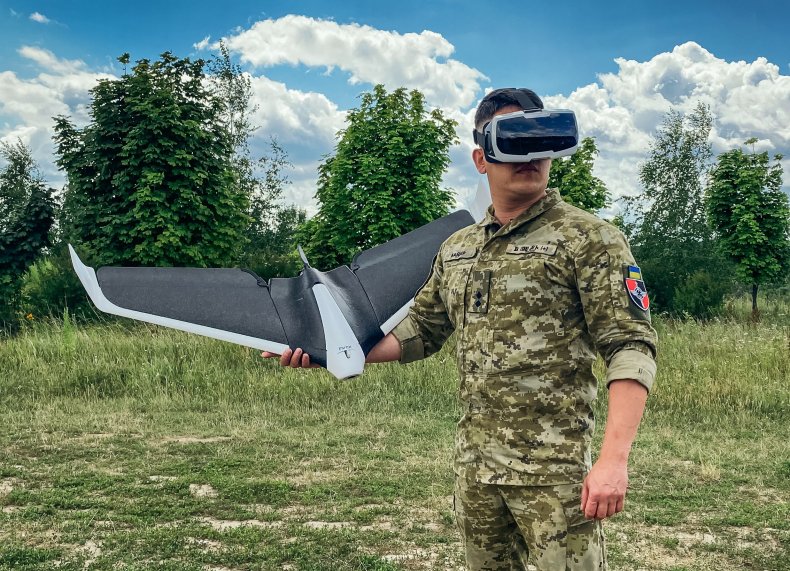DAVID BRENNAN
Ukraine's defense minister has urged the U.S. and other international partners to keep sending cutting-edge weapons to the war torn country, describing the battlefields as a valuable "testing ground" for new arms.
Oleksii Reznikov said on Tuesday that Ukraine's resolute defense against Russia's ongoing invasion showed Kyiv's forces are capable of handling the most modern and devastating weapons that NATO nations have to offer.
These include the U.S.-made HIMARS rocket artillery system partially credited with stabilizing the front line in the east and south in recent weeks, Reznikov said.
"Ukraine is now essentially a testing ground," Reznikov told an online Atlantic Council event. "Many weapons are now getting tested in the field in real conditions of battle against the Russian army, which has plenty of warning systems of its own."
Kyiv is sharing details of Russian electronic warfare, signals intelligence, air defense, missile technology and more with its international partners, Reznikov said.
"We are sharing all the information and experience with our partners," he explained. "We are interested in testing modern systems in the fight against the enemy, and we are inviting arms manufacturers to test new products here."
Reznikov noted Ukraine's significant use of American, French, and Polish artillery pieces, as well as Turkish drones, among other foreign-made systems. "It's a good chance to test their equipment," he added.
"Give us the tools, we will finish the job, you will have new information."
To finish the job, Reznikov said Ukraine needs a broad range of fresh weapons systems. Air and rocket defense systems are needed to blunt Russia's devastating missile strikes around the country, while more long-range artillery, aviation, tanks, and other vehicles are needed to press counter-offensives.
More anti-ship missiles, the minister added, would help harass Russian warships in the Black Sea and re-open sea lanes to ship Ukrainian grain and other exports.
Western high-precision, long-range artillery has helped slow the Russian advance in the eastern Donbas region and destroy key logistics and command hubs, Reznikov said.
More are now needed to eject the occupiers, he added." We need them fast, because wherever we stop the enemy they begin to dig in...this will increase our losses during the counter-offensives," Reznikov said.
Newsweek has contacted the Russian Foreign Ministry to request comment.
With the Russian eastern offensive slowing, attention is now moving to southern Kherson Oblast where Ukrainian troops are preparing the ground for a major counter-offensive.
"The Kremlin doesn't control the south of Ukraine, we will definitely liberate it," Reznikov said. "But we need to accumulate more weaponry."
The eight HIMARS so far sent to Ukraine have been particularly helpful, Reznikov said. The U.S. has already committed to sending four more, with Pentagon spokesperson John Kirby saying Tuesday that Kyiv would receive an unspecified number of additional systems.
 A Ukrainian lieutenant holds a Parrot drone during a practice session on the outskirts of Kyiv, on July 14, 2022. Defense Minister Oleksii Reznikov has said Ukraine is now a "testing ground" for all kinds of new military technology.IONUT IORDACHESCU/AFP VIA GETTY IMAGES
A Ukrainian lieutenant holds a Parrot drone during a practice session on the outskirts of Kyiv, on July 14, 2022. Defense Minister Oleksii Reznikov has said Ukraine is now a "testing ground" for all kinds of new military technology.IONUT IORDACHESCU/AFP VIA GETTY IMAGES"We are using HIMARS systems precisely, like the scalpel of a surgeon," Reznikov said. "We will not use the Russian 'meat grinder' strategy."
Ukraine needs a minimum of 15 HIMARS to stabilize the current front lines, the defense minister said, and at least 100 to be a "game changer on the battlefield" and support successful counter-offensives.
Ukraine has so far only been supplied with HIMARS munitions with a range of 50 miles. The U.S. has held back the more advanced rockets with ranges of between 90 and 180 miles, fearing subsequent escalation by Russia.
"Long-range systems would allow us to completely destroy their logistics, and rapidly cut off the Russian army from its support," Reznikov said. He added that following the recent dramatic strikes against Russian depots in the south and east, occupying units are moving their logistics and command hubs further from the front.
The defense minister suggested that the U.S. may eventually come around to providing the full range of HIMARS munitions. "I remain optimistic," Reznikov said. "For me, the word 'impossible' means 'possible in the future.'"
No comments:
Post a Comment